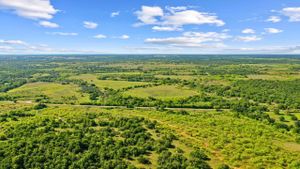New storms and flooding threaten parts of Spain yet again, particularly impacting the already hard-hit Valencia region. Just two weeks after devastating flash floods claimed over 220 lives and razed thousands of homes, forecasters predicted heavy rain would drench the area once more. On Wednesday, schools were shut down and train services were canceled as authorities braced for more severe weather.
Coastal regions of Valencia found themselves under the highest alert, with meteorologists warning of potential rainfall accumulations up to 180 millimeters, or about seven inches, expected to fall within just five hours. Cleanup efforts from the previous storms were still underway, leaving many streets covered with mud and debris, raising concerns about how the new influx of rain could exacerbate the already precarious situation.
Meanwhile, southern Malaga province wasn’t spared either. Streets were inundated with water, forcing the evacuation of around 3,000 residents from neighborhoods near the Guadalhorce river as a precaution. Schools were closed across this area too, including many businesses, and train routes were suspended, disrupting travel between Malaga, Madrid, and Barcelona.
Local authorities responded by limiting the use of private vehicles until Thursday to aid cleanup efforts and prevent traffic complications from the previous month’s floods. During those catastrophic events, many cars were swept away, leading to disastrous pile-ups. Fortunately, there were no reported fatalities directly related to the recent storms, though the potential for such incidents remained high.
Spanish weather forecaster AEMET had Malaga under red alert, stating parts of the region had already recorded around 70 millimeters—roughly three inches—of rain within just the first hour of the storm’s onset. Other areas, such as Tarragona province, were also under similar alerts, indicating the widespread impact of the weather system.
The storm bringing about these storms is primarily due to warm air colliding with stagnant cold air, which creates powerful rain clouds. Highlighting the gravity of the situation, experts have pointed out the increasing frequency of drought and flood cycles aligned with changing climate patterns. This is particularly evident across southern Europe, where severe weather has become seemingly more regular.
Beyond immediate storm concerns, the recent tragedies have reignited discussions about the need for climate action. Local officials have increasingly acknowledged the necessity of preparedness for not just flooding episodes but other natural disasters catalyzed by climate change patterns. These storms are not solely about adverse weather; they have broader implications on community resilience, infrastructure, and overall safety.
Despite the devastation, residents of Valencia and surrounding areas reflect strength and determination, coming together to support each other through the difficult recovery phase. The local community’s spirit shines when grassroots initiatives develop to help aid those displaced by the floods, showcasing the human ability to unite amid crisis.
The region now faces the dual challenge of coping with immediate weather threats and the long-term repercussions of climate variability. Local governments will likely have to reassess evacuation protocols and infrastructure investments, ensuring they are positioned to respond effectively when storms strike, reducing loss of life and property as much as possible.
Efforts to reinforce drainage systems, improve forecasting technology, and implement more rigorous building codes are subjects likely to gain traction among lawmakers and local leaders moving forward. Public sentiment is shifting, prompting calls for action and enhancing disaster preparedness strategies.
The most recent waves of storms might be hitting the same targets as last month, but as history teaches, communities can exhibit remarkable resilience and recover stronger. Spain, particularly Valencia, is facing its moment of challenge, but with it also emerges the potential for growth and improvement against the backdrop of nature’s fury.
The coming days are pivotal as residents look to the skies, waiting for rains to ease, and hoping for clearer paths to recovery. There’s no doubt this isn’t just about weather anymore; it’s about how communities evolve, adapt, and respond to the climate challenges of our time.



